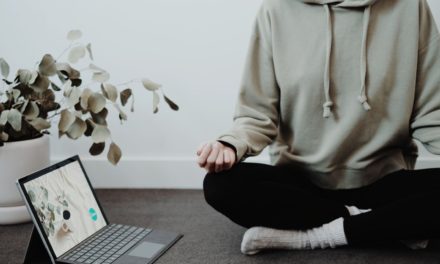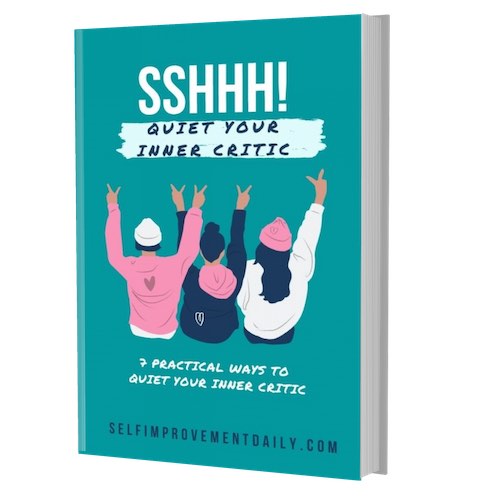This article may contain affiliate/compensated links. For full information, please see our disclaimer here.
Interested in learning how to self hypnosis? Self-hypnosis is a simple and effective tool you can use for self-improvement.
Read on to learn more!
What is Hypnosis and Why Use It?
Hypnosis is a tool to achieve a mental state of simultaneous concentration and relaxation. A unique and important trait of the state of hypnosis is the willingness to suggestion.
Hypnosis is primarily a relaxation tool but it is also an excellent self-improvement tool as well. You can use self-hypnosis to become more self-aware.
Here’s an explainer video on how hypnosis works:
There are generally 2 types of hypnosis:
Hypnosis By Hypnotist: You seek a professional’s help to reach the state of hypnosis and to reap its benefits thereafter.
Self-Hypnosis: You do it yourself; you are your own hypnotist.
For a lot of self-improvement issues, self-hypnosis is a better tool as it can be done in your own time, and learning self-help hypnosis is not very difficult. If results are not satisfactory, a professional’s help can be employed.
As you are more responsive to suggestion during the hypnosis state, you can use appropriate suggestions to help resolve various personal development concerns.
Many people use self help hypnosis to help quit smoking or lose weight. Hypnosis for stress relief is a common use as well.
Self-confidence hypnosis is also widely used for gaining self-confidence and self-esteem. A lot of people have successfully used self-hypnosis for resolving various fears as well.
Here’s a listing of the best of self-help hypnosis downloads available today for personal development purposes.
How to Self Hypnosis
Here is a basic technique widely suggested for self-hypnosis:
- Sit (or lie down) comfortably in a dimly lit room with no external distractions, and close your eyes.
- Watch your thoughts slip by, until they have all gone; don’t force them out.
- Imagine that you are releasing tension from each part of your body, starting with your head and working your way down to toes.
- Breathe slowly, for a few minutes.
- When you feel relaxed and comfortable, start counting backwards in your mind, slowly from 10 to 1. Imagine 10 to be your current state, and 1 to be state you want to go – the hypnotized state.
- State your suggestions a few times. It is recommended that suggestions be specific, and in positive language.
- When done, start counting in your mind slowly from 1 to 10, where 1 is your current state, and 10 your normal, awake state.
- Wait a few seconds, and slowly open your eyes.
Practice these steps for about 15-20 minutes a day, and do it when your mind is alert and active. You may seek professional help for the first couple of sessions, to help get you started.
Additionally, there are also a few websites solely dedicated to self-hypnosis and they provide detailed hypnosis techniques. Here is one that offers FREE 5-day Email Hypnosis Course with audio and worksheets.
From building self-confidence and self-esteem to managing stress and anxiety, you can find pretty much every conceivable self-improvement and personal development area covered by HypnosisDownloads, giving you the flexibility to choose the hypnosis product that is perfect for you.
Remember, self-hypnosis is a skill and just like other skills, it needs regular practice to become adept at it. Once you do, you will not only gain the relaxation benefits it has to offer but also find that your stress levels lower and your self-confidence naturally improves.

Debunking Myths and Fears About Hypnosis
There are some myths regarding hypnosis. Here are few common hypnosis fears.
1. DO I LOSE CONTROL WHEN UNDER HYPNOSIS?
Negative. You always have control. You can snap out of it whenever you choose to, just as easily as you can shut off that movie when you realize you need to be elsewhere.
During hypnosis, conscious mind is still present unlike when we are asleep; it is just not actively involved. You can invoke it whenever you want to.
2. CAN I BE HYPNOTIZED WHEN I DON’T WANT TO BE HYPNOTIZED?
Nope, you can’t. You need to be willing to be hypnotized for it to happen. If you consciously choose to not pay attention to the hypnotist, you cannot be hypnotized. When a hypnotist asks us to relax, we can make a conscious decision to either do so or not.
Answering Common Questions About Hypnosis
Here are the most commonly asked questions about hypnosis
1. IS HYPNOSIS A NATURAL STATE?
Absolutely. We pass through it every night. It is akin to the drowsy state of mind we go through right before dropping off into sleep, or slipping into the dream state. Only, during hypnosis our concentration is heightened and focused.
2. HOW DOES IT FEEL DURING HYPNOSIS?
People who experienced being under hypnosis describe it as a state where you are aware of what is going on, but not really caring about it.
3. DO WE EXPERIENCE HYPNOSIS IN DAILY LIFE?
Anytime you are engrossed in watching an interesting movie or reading a good novel – what do you experience?
Your concentration into the movie or novel is heightened, your focus becomes so narrow that other external stimuli in your surroundings are ignored – you may be mildly aware of them, but you really don’t care enough to get distracted by them. In other words, you are in hypnotized state.
How about the times when you imagine the worst in a situation and start to worry? Your concentration is inward, but heightened into the scene playing in your mind that is causing the worry.
You may choose to ignore other external stimuli; and you may even be suggesting to yourself all the things that could go wrong in that situation.
That, right there, is self hypnosis.
4. IS HYPNOSIS THE SAME AS MEDITATION?
It is, as far as the relaxed state of mind is concerned. The only difference is in meditation, there are no suggestions involved.
Check out this list of the best of self-hypnosis downloads that you can choose from to get a better idea about self-hypnosis.





